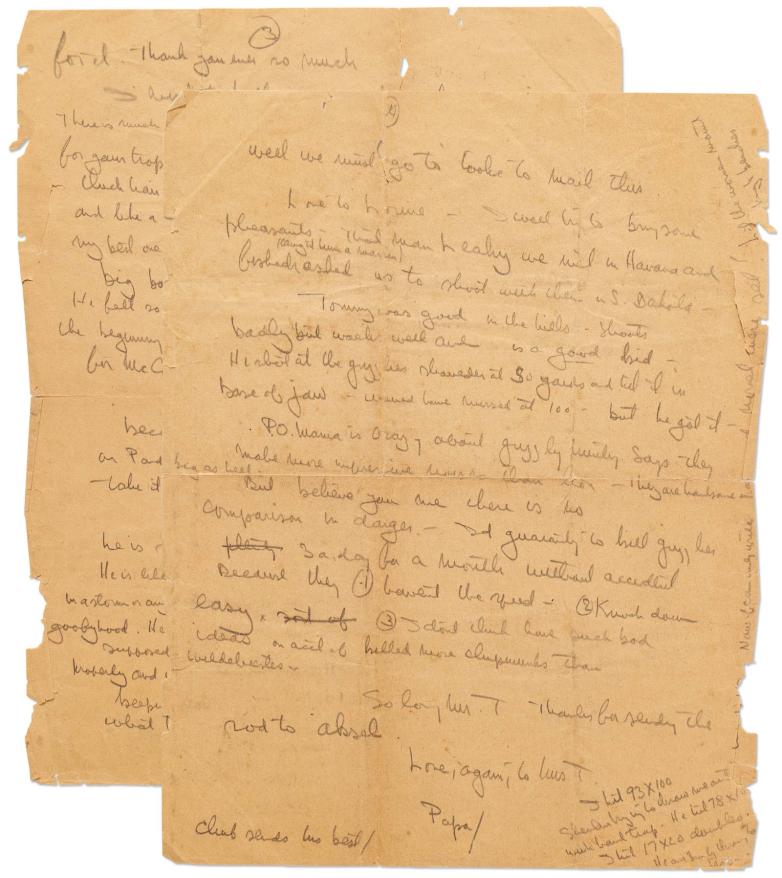Hemingway's Grizzly Hunting Letter and Historic 1833 Declaration of Independence Printing to Auction

Hemingway's letter about grizzly bear hunting
A duo of remarkable historical artifacts, including an 1833 copy of the Declaration of Independence and an autograph letter signed by Ernest Hemingway on grizzly bear hunting, are set to go under the hammer at the Nate D. Sanders Auctions on October 26.
The autograph letter signed by Ernest Hemingway, penned in 1936 while he was at the L-Bar-T Ranch in Wyoming, provides a vivid glimpse into his first grizzly bear hunting experience. In this engaging letter to his friend Charles Thompson, Hemingway writes passionately about the grizzly bear, comparing it to lions and recounting the challenges of hunting this formidable beast. The two-page letter, composed in pencil, reveals Hemingway's enthusiasm for sport hunting, and it even includes a postscript in which he discusses his shooting accuracy.
The exceptionally rare 1833 printing of the Declaration of Independence was made from the original copper plate engraved by William J. Stone. John Quincy Adams, then Secretary of State, supervised the original 1823 project, commissioning Stone to reproduce the document as a commemorative piece for the upcoming 50th anniversary of the Declaration's signing. Stone employed a unique wet-ink transfer process, wetting the original document and transferring some of the ink onto a copper plate. This plate was then used to print 201 vellum copies, the majority of which now reside in esteemed collections.
In 1833, the same copper plate was employed to print additional copies on rice paper for inclusion in Peter Force's book American Archives. The series was intended to encompass 20 volumes, but printing ceased after just nine volumes due to the prohibitive cost.
While the exact number of printed Declarations is uncertain, most are believed to have been destroyed. This 1833 Force Declaration is the oldest known Declaration apart from the original and the 1823 copies. It still remains within American Archives, a rarity as most copies have since been cut out, making the preserved copy all the more desirable.















